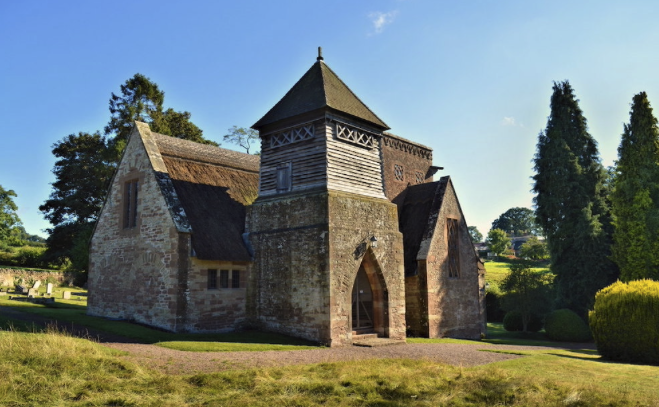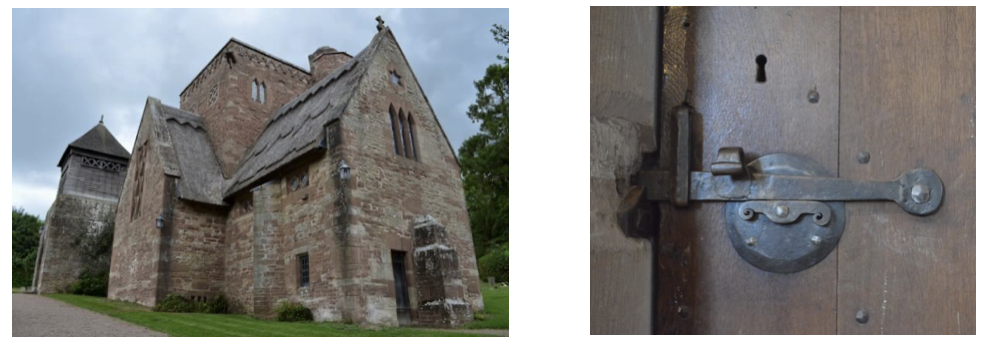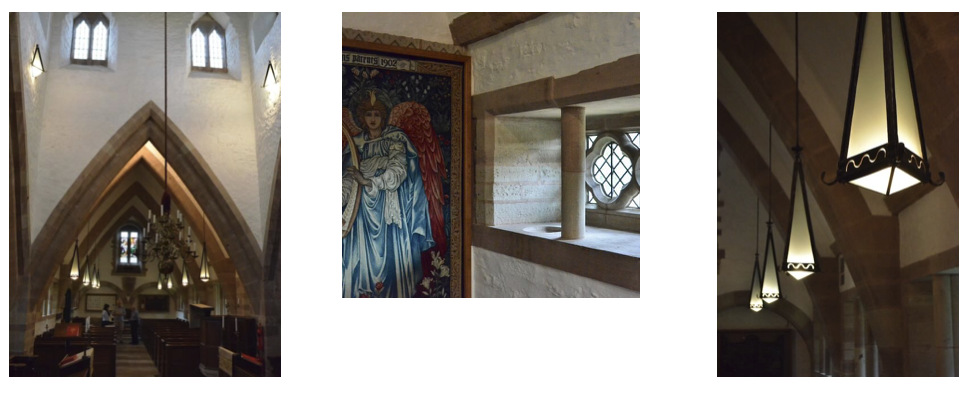

We Love…….
….All Saints Church in Brockhampton because it is a beautiful embodiment of the Arts and Craft Movement.
The church was commissioned by a local landowner Alice Foster in memory of her parents, and was designed by the architect William Richard Lethaby, who was a leading light in the Arts and Craft Movement.
William Lethaby was born in 1852 in Barnstaple. His father was a master gilder and carver and Lethaby’s time spent in his father’s workshop engendered a deep appreciation of craftsmanship. Lethaby studied to be become an architect via the Barnstaple School of Art and an apprenticeship, and in 1879 he started work as the chief clerk to Norman Shaw, a famous Victorian architect who was a proponent of the english vernacular revival and helped shape the course of the Arts and Craft Movement.
After 10 years of working for Shaw, Lethaby set up his own practice . He did not confine his design solely to buildings, but encompassed furniture, books, and stained glass . He was also involved in the education of architecture and wrote several books, the most famous being “Architecture, Mysticism, and Myth”. He was closely involved with Society for the Protection of Ancient Buildings, and the Art Workers’ Guild”, all of which were a rallying point for the artists and architects who developed the Arts and Crafts Movement.
From drawing board to construction, The church was to built in accordance with the Arts and Crafts philosophy that craftsmanship expresses the inherent beauty of a material, nature as inspiration, and the value of simplicity, utility and beauty. Thus, Lethaby lived on site during the building work and employed craftsmen direct, believing that any problem that arose could be solved through the application of craftsmanship and experimentation. Not surprisingly this led to costs mounting and tensions rising between client and architect. in the end Lethaby came close to a nervous breakdown following a major structural problem that was caused by a lack of experience of the young architect who was employed in the day to day running of the site, and a lack of foundations. Lethaby paid for the repairs himself and never designed another church. None the less the resulting church is an extraordinary building.

Bold shapes and an interesting juxtaposition of forms externally make this building an idiosyncratic representation of a church. The porch is unadorned with the oak boarded tower set above to signal the entrance. The crossing tower somewhat squat and the steeply pitched roof is thatched which gives a domestic feel to the building.
Internally, the white concrete vaulted ceiling is held aloft by deeply pointed sand stone arches creating an intimate space which is both mystical and yet homely. The limited pallet of materials (plain white-washed walls and sandstone arches ) are set off by the beautifully detailed ironmongery, fixtures and fittings. Two tapestries to the left and right hand of the alter designed by Burns Jones and made by Morris and Co., and the stained glass east window over the alter is by another famous Arts and Craft artist Christopher Whall.

Simon Jenkins wrote that the church is “an expression of past time, yet without imitation or pastiche” which aptly sums up this amazing building. If you are passing through Herefordshire it is definitely worth a detour!